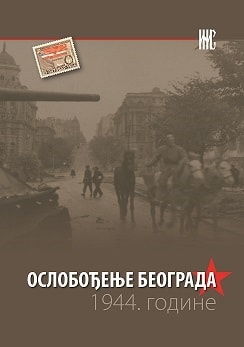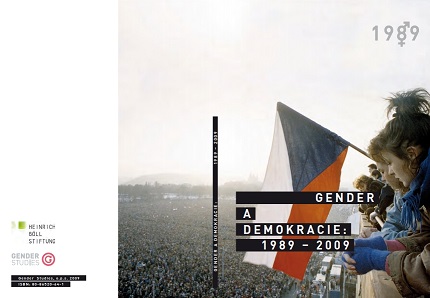
We kindly inform you that, as long as the subject affiliation of our 300.000+ articles is in progress, you might get unsufficient or no results on your third level or second level search. In this case, please broaden your search criteria.





Athens in the classical period of Hellenic history was by far the most developed city of Helena, and its democratic system of making important decisions in the Assembly as well as their implementation, was a role model not only in the Hellenic world. Aristotle does not follow his teacher Plato nor Xenophon who do not discern difference between the system of government in the household and the polis. Polis is the community of equal people where relationships create free citizens who are also representatives of their own households, families or the territorial units (topics). Aristotle in the Rhetoric shares laws into general (natural) and specific, those which individual nations defined to themselves and for themselves which could be written and unwritten. Constitution of Athens is the only surviving piece of the rich Hellenic and legal history. In the following lines we will try to explain what this work contains and why it is important even nowadays after two and a half millennia.
More...



Georgi Dimitrov (1882–1949) Bulgarian communist leader, head of state after 1945. His international recognition was acquired in 1933, follo-wing the German Reichstag–fire trial in Leipzig, where he was acquitted of Hitler's judges, accused by Herman Göring and Joseph Goebbels. He moved then to Moscow, where he became secretary general of the Communist International, wich controlled of the communist parties aro-und the world. He had a role in the elaboration of the popular front policy - successful in France and Spain. At the same time he had to suffer of Sta-lin's dictatorship, he had to experience the execution of. After 1945, with the Yugoslavian Joszip Broz Tito, many of his associates they saw the op-portunity in the Balkan Federation to loosening the dependence on Sta-lin. What Tito did, he did not succeed: the presence of Soviet troops in Bulgaria had decided the outcome.
More...
Gömbös Gyula (1886‒1936) prime minister of Hungary (1932‒1936) started his political carreer after the defeat of Hungary in the First World War as a well-trained and talented officer. On the basis of his radical views influenced by different effects and because of his policy as head of government many people considered him that he took over mainly Mus-solini’s and partly Hitler’s views and political practice and his thinking and discussing politics were characterized by these facts. This study analyses the strong similarities and the important differences among the ment-ioned three politicians in the area of the ideology and the exercise of po-wer. The differences in the internal conditions of the three countries and among the characters of the three politicians explain the said similitudes and the differences. According to the author it can be prouved that Gömbös tried to creat a system (diktatorship) that (1) is similar to the fas-cism and the national socialism; (2) it’s not a copy (except the unsuccesful trial of the acceptance of the Italian coorporate system), but it’s about be-ing in similar societies the politicians give similar answers to the challenges.
More...
This text и an analysis of the photo of Vasil Levski in a hussar uniform from 1869, which was taken in Bucharest in the photo studio of Carol Popp de Szathmari, who was a famous Hungarian painter and photographer working in Romania. The text includes the rich biography of Szathmari, as a painter, traveler and the first photographer in Bucharest and the first military photographer in the world. There и also a brief summary of the specifics of the portrait photography in the XIX century. The text also concentrates on the fact that the uniform and the weapon did not belong to Levski himself, but were a property of the photo studio. The Analysis of the photo includes the position of the model – a standing man, the uniform, the accessories and the interior. Another main topic of the text и the message of the photo, and the way it would had been seen in the XIX century. There и also an analogy with other portraits taken from the same photographer and in the same studio, one of which и the photo of the Romanian king, Alexandru Ion Cuza, who also has a portrait of himself in a hussar uniform.
More...
The text describes the use of Vassil Levski‘s portrait in the first episode “Guests” of the comic “The Unexplained” by the magazine “Rainbow” (1979).
More...
Article is devoted to the analysis of the seventeenth-century work by Erasmus Sixtus „O cieplicach we Śkle” („About baths at Śkło”), based on the first edition from 1617 and pays special attention to syncretism of the scientific and colloquial style. The observations concern the beginnings of scientific language in medicine and specifically in hydrotherapy.
More...

The activity of the Union of Jewish Religious Communes in Yugoslavia (henceforth: the Union) was renewed on October 22, 1944. The Union was reconstructed on the basis of the pre-war organization that went into the same activities and bore the same name. Under the law valid at the moment the Union had been set up, it was treated as a religious community. In keeping with the changed social and political conditions, it was necessary to start the process of adapting to the new reality. The change of status and character of the post-war Jewish community was officially adopted at the sixth post-war conference of the Union of Jewish Communes in September 1952. This was made official by removing the word “religious” from the official name of the Union. After WWII there were some 4,400 Jews who had survived the war as civilians and members of the partisan movement in the whole territory of Yugoslavia. The population that had survived the horrors of the war in the Yugoslav territory was enlarged through arrival of refugees and POWs who had been in camps in occupiers’ or neutral countries. They were registered with the Union. Apart from Yugoslav citizens, among the refugees who contacted the Union there were also citizens of 18 European and non-European countries: of Germany, Switzerland, Turkey, USA, UK, Columbia, Spain, Syria, France and Poland. The Union of Jewish Religious Communes of Yugoslavia organized their lives too and took care of them, as well as of Yugoslav nationals.
More...
The Serbian bourgeoisie found itself in a particular social and political situation in 1944–1945. Apart from the victory of the People’s Liberation Movement in the liberation and civil war and the take-over by the Communist Party of Yugoslavia, it was determined by the division into two worlds, East and West, socialism and capitalism. The Serbian bourgeoisie, like that in other East European countries, found itself between those two worlds. On the one hand, according to the basic ideological values it espoused, it was turned westwards, whereas, on the other hand, geographically and politically it found itself in the area in which the new political and social forces headed by the Communist Party of Yugoslavia strove to establish the values which canceled the very basis of the existence of the bourgeoisie. Particular attention was devoted to democracy, as one of the great ideas of the Serbian bourgeoisie. In meeting and clashing with the revolutionary forces it was defeated and virtually “disappeared”, together with the bourgeoisie as political and social class. After difficult crucible with it met during the previous decades – for instance crucible connected with the fulfillment of the national ideal, i.e. the creation of a democratic state in which all Serbs would live, or temptations occurring within the multiethnic state, or those, particularly hard, created by wars, particularly WWII - the Serbian bourgeoisie was weak, divided, without the aid of a strong monarchy, army and support of the Western democratic powers in that historical moment to defend and save the achievement in which it invested political, economic and intellectual capacity and innumerable human losses. The older generation of the Serbian bourgeoisie which had experienced democratic political life was biologically, politically and in every way tired and spent. It couldn’t understand the new times which demanded changing one’s ideological and political views and opinions, as well as moral values and their adaptation to the new times. Neither did the younger generation of bourgeoisie which was supposed to take over and lead the struggle for democracy have enough strength, unity or capability. It ripened in the years leading to WWII and had no opportunity to realize what the real democratic and parliamentary life looked like. The new times draw them partly into the ranks of the Communist Party in whose ideals they saw beacons for better life and arrangement of social relations.
More...


